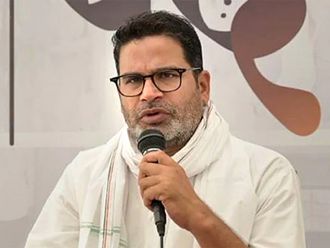
Although Republican candidates running for their party’s presidential nomination will criticise the Obama administration’s strategic shift to scale back the American military, few should doubt that Washington intends to retain the superiority it currently enjoys, even if doing so will prove costly.
In the latest Pentagon policy paper, Sustaining US Global Leadership: Priorities for 21st Century Defence, President Barack Obama called for “agile and flexible armed forces”, which would gradually replace large-scale army capabilities.
While overwhelming army assets emphasised ground warfare, which dominated the post-9/11 era and was, for all practical purposes, a legacy of Cold War strategies, the past decade illustrated why the paradigm was difficult to sustain. How will the new emphasis on ‘smaller conventional ground forces’ serve American interests?
Of course, and by all accounts, the wars in Afghanistan and Iraq impoverished the wealthiest country in the world, creating an unprecedented global financial crisis.
Simply stated, Washington no longer enjoyed the financial resources to spend over a billion dollars each week per campaign, an untenable luxury even in the best of times. Still, the new blueprint was not just about money, but focused on long-lasting technological changes too. In fact, while the US military was slated to lose up to half a million troops — settling around one million personnel in 2022 divided equally between combat and support staff — these men and women would henceforth concentrate on advanced technologies, including cyber-warfare and missile defence capabilities.
Naturally, the US would still be ready to maintain a robust nuclear deterrent, confront terrorism and protect the US homeland, but much more of the tasks assigned the military would focus on the latest technical advances that were under development.
China challenge
The focus would be on meeting the new challenges of an emergent Asia dominated by China, which was and remains America’s challenger (and banker), though one wondered whether Washington could easily “turn the page on a decade of war”.
To be sure, the vision of a modern military based on speed and stealth, rather than overwhelming and heavy army capabilities, was a long-term objective of military strategists analysing global trends. Ironically, the implementation of such a vision was a priority for former secretary of defence Donald Rumsfeld, who first embarked on the plan in early 2001 but was thrown off course by the 9/11 attacks and, more important, by the angry US responses in Afghanistan, Iraq, and the so-called War on Terrorism. President George W. Bush’s infamous “bring-it-on” moment of bravado came as close to silly brinkmanship that one could fathom but that was then.
A decade later, Obama and his generals demonstrated single-minded resolve to get back to non-partisan plans that articulated long-term strategic ambitions, which translated into concrete national security goals.
Sticking to the plan proved beyond the shadow of doubt that Obama was not a closet socialist but as much of a conservative as his predecessor, even if he excelled in entertaining loftiness.
His declaration that “we’ve succeeded in defending our nation,” was comical when one assessed the significant damage that the Patriot Act, for example, inflicted on citizens whose First Amendment rights were literally emasculated.
Sadly, rhetoric was standard fare in what passed for news cycle policies inside the Washington Beltway, especially in an election year. Far more important was the Obama administration’s long-term initiatives, which perfectly illustrated a gradual evolution that spanned half a century, and that confirmed that Obama was a pure product of the establishment.
As Obama affirmed, the world faced “a moment of transition,” even as he requested a $662 billion (Dh2.42 trillion) budget for the Pentagon for fiscal 2013, a sum that exceeded the next 10 largest national defence budgets on the planet combined. On that score, at least, nothing changed.
In the Arab world, the trend of American involvement was also quite clear as Obama recognised the post-9/11 era over, with Washington increasing military sales to allies who would be called upon to assume a greater share of the burden.
With the assassination of Osama Bin Laden, coupled with major successes against criminal elements that plotted death and mayhem, Washington was ready to rely on allies like Saudi Arabia, the UAE, Qatar and others to act as a first line of defence against regional hegemonic powers.
Riyadh and Abu Dhabi would now be freer to purchase advanced weapons systems while Doha could host the Taliban. Taboo contacts between various American officials and Islamists became routine, which meant that one could actually speak with foes, rather than simply drop bombs over their heads. Naturally, threats would be taken seriously, but no one was under any illusions that the ideological threat that replaced Communism during the past decade — Islamophobia — has now run its course.
In Sustaining US Global Leadership, Obama shifted American power projection towards China and the Asia-Pacific region in general, and while no one contemplated a new policy of ‘containment’, Chinese officials probably factored in their inevitable rise putative American reactions. While it was too early for China to challenge the US militarily, Beijing’s strides for parity were on course, something that Power Inc could no longer simply dismiss. Remarkably, Obama and his generals understood that challenges to American supremacy were now in the making, which is why they polished costly plans that intended to secure mighty capabilities.
Dr Joseph A. Kechichian is a commentator and author of several books on Gulf affairs.










